On Jan. 20, President Trump signed an executive order that put an immediate halt on approvals of wind projects both onshore and offshore. This halt will be lifted after a group of executive agencies finish a report on wind energy.
These agencies are directed to investigate wind energy, specifically the ecological and economic impacts of every large wind project in the country. The agencies will decide whether to cancel these projects based on the findings.
To many, this is not a surprise from the second Trump administration. President Trump has always been critical of wind energy. He argues that they rely on government subsides and are terrible for the local environment.
This executive order has put a stop to the three major offshore wind projects that New Jersey had planned. The projects have a controversial history. The state has been to court with both local communities and a large Danish community over these projects.
They were also supposed to be part of a legacy that Governor Phil Murphy wanted to leave behind, an attempt to make New Jersey seem environmentally conscious with its use of energy and the renewable sources it uses.
Wind Energy in New Jersey
The story goes back to 2017, when Phil Murphy won his first term as governor. Much of his campaign that garnered him 56 percent of the vote was a promise to make the state carbon neutral by 2050. The idea was popular in progressive/liberal campaigns across the country and world at the time, and Murphy was making headway on the promise when a major wind project was announced in 2019.
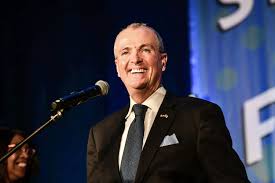 New Jersey had reached a deal with Danish energy company Ørsted to build dozens of wind turbines off the coast of the Jersey Shore. The project – labeled “Ocean Winds” – would generate 1,100 megawatts of energy, which would power hundreds of thousands of homes.
New Jersey had reached a deal with Danish energy company Ørsted to build dozens of wind turbines off the coast of the Jersey Shore. The project – labeled “Ocean Winds” – would generate 1,100 megawatts of energy, which would power hundreds of thousands of homes.
This was cause of great celebration. So much so, that the state went even further by approving two other major wind projects in the same announcement in June 2021.
The first of these was “Ocean Winds II,” named after the last project in part because Ørsted had been awarded this operation as well. This will prove to be disastrous in a moment. The other was dubbed “Atlantic Shores,” which planned to generate 1,510 megawatts of power. That made “Atlantic Shores” one of the biggest wind projects in the world at the time.
Optimism was at its absolute height. Governor Murphy made a new goal for the state to go carbon-free by 2035 instead of 2050. Environmental agencies and progressive leaders cheered the state on as it pushed through these ambitious plans.
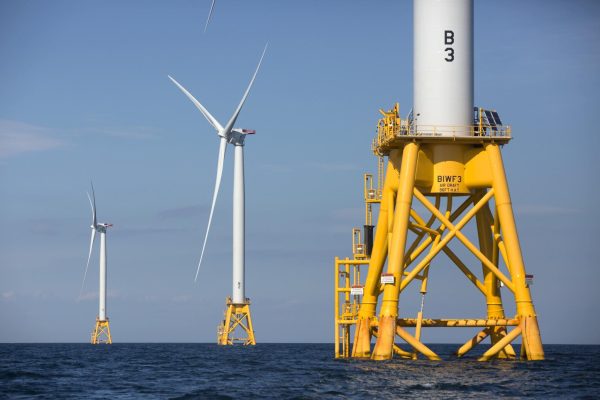 However, opposition came quickly and loudly. It started with the communities at the shore, who went to Trenton in strong resentment of state leaders who seemingly ignored the people that would be receiving the energy from the wind turbines.
However, opposition came quickly and loudly. It started with the communities at the shore, who went to Trenton in strong resentment of state leaders who seemingly ignored the people that would be receiving the energy from the wind turbines.
Firstly, the wind projects would raise prices for residents. The Board of Public Utilities stated that the first “Ocean Winds” project would mean an increase of $1.46 per month for residents, and that was according to a 2019 announcement before the pandemic and drastic rise of inflation.
More importantly for communities at the shore, the wind turbines could keep tourists away. Many shore towns depend on beachgoers and boardwalkers who there during the summer. Having wind turbines visible form the beach could reduce those crowds. And, concerned, many local organizations fought hard against these projects.
In the 2021 election, Murphy won by just 51 percent, with his Republican competitor receiving 48 percent. Murphy lost a lot of support along the shore, including having lost Atlantic County.
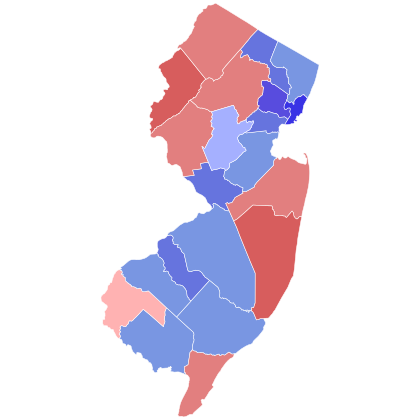
This shows New Jersey’s 2017 gubernational election where Murphy won 56 percent of the vote.
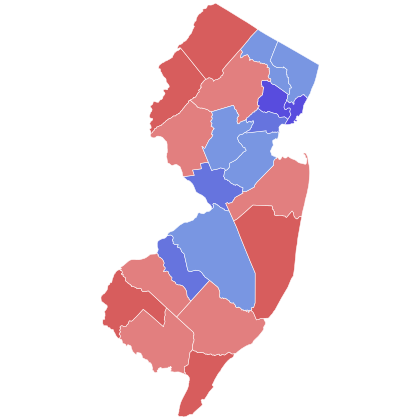
This is the 2021 map, where he won 51 percent.
Other issues began to burden the wind projects. The pandemic brought everything to a stop, and even when lockdowns were scaled back, parts for the wind turbines rose in price and supply chain troubles brought more complications. Ørsted also blamed the start of the War in Ukraine as something that has gotten in the way for these projects.
With so many mounting difficulties, and with no progress in getting the turbines in the water, Ørsted waved the white flag. In late 2023, they announced they were pulling out of the two “Ocean Wind” projects. To make a long story short, the state government was not happy.
Basically, Ørsted got plenty of tax breaks and certain state benefits for taking the deal, as long as they also gave around $300 million to the state. The $300 million was partly a promise that they would have the first project completed by 2025 and to help develop the offshore wind industry in New Jersey.
When Ørsted abandoned the two projects, they believed they were no longer obligated to pay for any of this. The State said they were, and so a lawsuit forced the two to compromise. Ørsted gave over $125 million to New Jersey, and it was free from the Ocean Winds project.
Although Ørsted had no more business with New jersey after this, their story is interesting. They are the world’s largest wind energy company, and they have many other offshore wind projects in the Northeast. But they faced similar local lawsuits from these other projects, and their stock price has plummeted since the November election and Trump’s executive order.
The “Atlantic Shores” Atlantic Shores project was moving forward. And very quickly after Ørsted left the state, the Board of Public Utilities revealed that two more projects were awarded to three companies. These came in the form of the “Attentive Energy II” and “Leading Light Wind,” the latter of which was planned to generate 2,400 megawatts of power.
Both new projects would be around 40 miles off the Jersey shore, far from the coast. Together, they would power 1.6-1.8 million households. Even though there would be a steeper electric bill for residents once the wind energy got to the grid (specifically an increase of $6.84 monthly), part of the deal with the companies is that they would pay tens of millions to low-income homes to deal with their electric bills.
Seemingly everything was in place. Despite a pandemic, severe economic woes, lawsuits from worried communities, and Ørsted packing up and leaving, it looked like the wind projects would finally arrive. They would come at a hefty price for the state, but Murphy and environmental groups said they would be reliable and be a prime example of how to fight against climate change.
Trump Wins & Takes Office
But in November, Trump handily won the presidential election. During the campaign, Trump repeatedly described wind energy as too expensive for unreliable results. Trump had also bashed the Biden administration for its climate initiatives that benefited renewable sources of energy.
The president’s philosophy on energy is that fossil fuels have been unnecessarily targeted despite how easy they are to obtain and use. During his first administration, Trump approved of massive oil pipelines, removed the United States from the Paris Climate Accord, and scrapped regulations meant to cut CO2 emissions.
On the campaign trail, he decried subsidies that the Biden administration awarded for energy alternatives such as subsidies for electric vehicles. His pick for Secretary of Energy – Chris Wright – agreed with this point during his confirmation hearing in January.
Days before taking office, he specifically mentioned “Atlantic Shores” when saying: “Off the coast of New Jersey they wanna build like 200 wind mills that people are going crazy. Nobody wants them.”
On his first day in office, Trump signed a number of executive orders on energy. They include multiple meant to remove barriers for the extraction of fossil fuels and a major one that declared a national energy emergency. And an executive order put a hold on any wind projects in development or renewals for existing ones.
In light of the executive order, on Feb. 3 Governor Murphy declared that the bidding process for “Atlantic Shores” would be cancelled. “Atlantic Shores” had received all the needed paperwork from the federal government a while ago, but one of the two companies backing it left shortly after Trump took office. The bidding process that the Governor canceled was to secure necessary funds before the process to put the turbines in the water began.
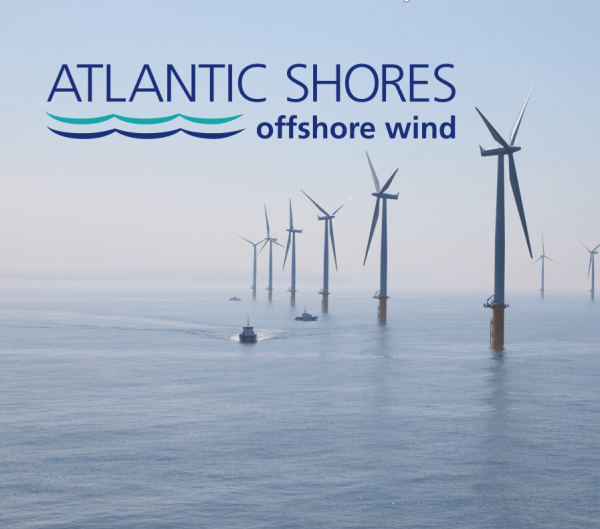
The other two projects – “Leading Light Wind” and “Attentive Energy” – barely started the paperwork with the federal government. They have not been able to get anything processed since Trump’s executive order went into effect.
There is still a year left in Murphy’s tenure, and none of the three projects have been officially canceled. Plus, Trump’s executive order is only temporary, with the report that should end it expected soon. What the report will detail – including the fate of Jersey’s wind projects – remains to be seen.
Nonetheless, this feels like the death of Murphy’s big promise, the promise to use Jersey’s vast waters to generate electricity with hundreds of wind turbines and fight climate change.
But that promise was opposed by the communities that would have to live closest to the turbines. That promise guaranteed an eventual increase in electric bills. And that promise didn’t account for consequences of an unforeseen pandemic, the abandonment of the primary company taking on the wind projects, and a federal government that would fight against these projects.







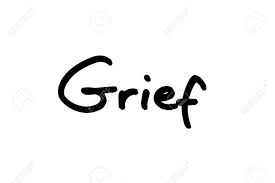

















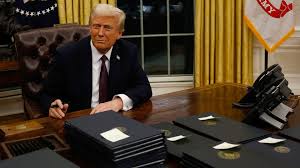



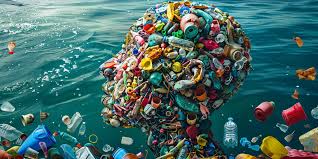
Regan Burke • Feb 18, 2025 at 9:50 PM
Wind power is not a panacea, but it is part of the solution to the climate crisis. Trump’s leadership failures in exiting the Paris accords and ramping up fossil fuel use/extraction fly in the face of scientific evidence on global warming. His policies will leave a legacy of environmental catastrophe that our generation will end up paying for.